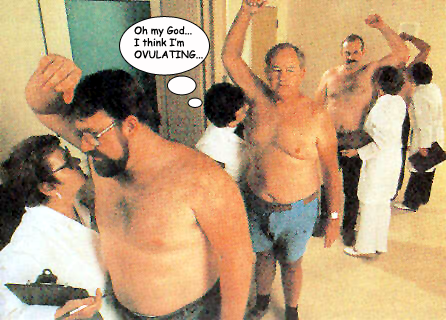Like most standardized tests, the GRE claims to measure general knowledge acquired by the individuals who take it. However, most people think this is an inaccurate description of what it really measures: an individual's "thinking skills." In this blog entry, I will talk about the research I found on the bias of the test... and complain about it.
The GRE is used to measure applicants against each other and each individual's potential for success in graduate programs. Some schools rely on the GRE to make decisions about applicants because it is a numerical value. But looking only at these standardized test scores, schools might pay no attention to other determinants of success among graduate students like drive, passion, determination, and charisma, and whether or not each applicant has them. Ultimately, these characteristics seem vital to success. How does one expect to be successful if they don't care about or want to use their knowledge?
Discrimination started against the individuals taking the GRE when it became a computer-based test. The computer-based version zeros in on a person's score within the first few questions in each section. This is unlike early paper versions which offered every student questions weighted with the same value. You're now probably thinking what I'm thinking: how in the world is this fair? Well the truth is, it's not.
Despite what the ETS says, the GRE doesn't measure an individual's critical skills associated with competence, it measures the students ability to pace and guess strategically. This means that exceptional GRE scores can be prepared for by learning techniques for answering questions that have nothing to do with the amount of knowledge and individual has obtained. I bet you know what that means: students with the money and access to test-prep materials have an advantage and these advantages are, of course, associated with a high socioeconomic status. Just because someone has the money to go to test-prep classes and buy every book on the GRE in the book store, it doesn't mean they will do well on the test the first time they take it; they just have the money to take it again.
The GRE further discriminates against females and minorities. Research shows that most females receive better grades in undergraduate studies but lower scores on the GRE and other standardized tests. On average, white men tend to score around 100 points better on the GRE than females of various cultures and all minority males. Within ethnic groups, men received higher scores than females. Overall, people who proclaimed themselves as white scored higher on the verbal and analytical sections that all of the other ethnic groups studied. At this point I'm thinking, "WTF?!?!" This kind of information is seriously disturbing... at least to me.
Figure 1: What graduate schools picture when they see my GRE scores
One good thing about the ETS, however: they discourage universities from using GRE scores to discriminate against applicants. This might be because GRE scores were only responsible for explaining a 9% variation between students' first year graduate grades. Hey graduate schools, you know what would be a better way of screening applicants? Undergraduate grades, which were responsible for explaining 14% of the variation in first year graduate grades between students. Furthermore, graduate schools that placed a high emphasis on GRE scores accepted mostly white male students. So for all you minority females with a low socioeconomic status, good luck! The odds are against you.....




